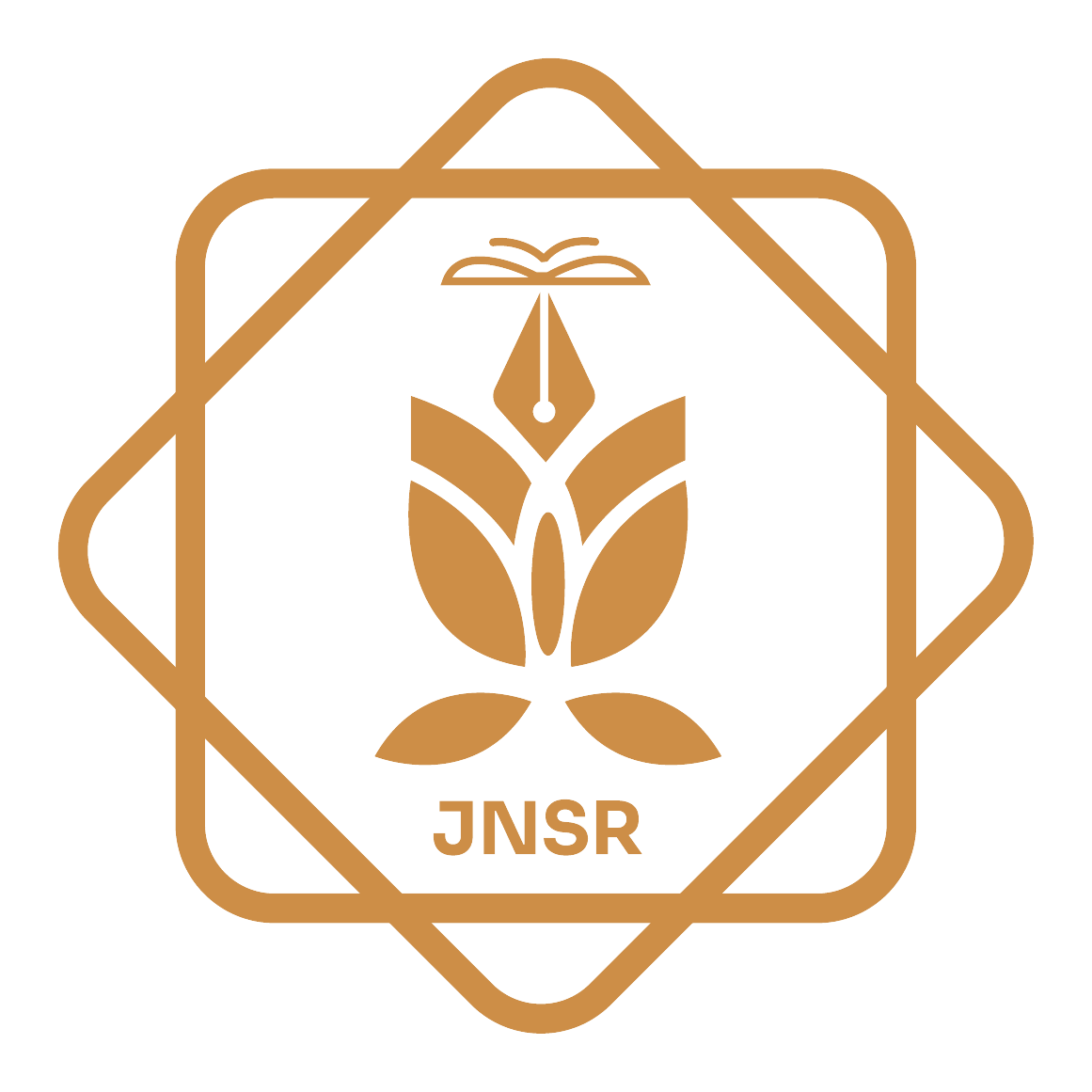Bibliometric Analysis of Pyrimidine Compounds with Anti-cancer Activity: Research Trends from 2015 to 2023
DOI:
https://doi.org/10.62810/jnsr.v2i3.61Keywords:
Pyrimidine, Anti-cancer, Bibliometric Analysis, Pyrimidine Derivatives, Heterocyclic compoundsAbstract
Cancer remains one of the most pervasive diseases in the world, globally, leading to millions of fatalities annually. Currently, numerous anti-cancer treatments are available to address the various types of cancer. Pyrimidine, a class of heterocyclic nitrogenous compounds, holds substantial promise in anti-cancer drug development due to its structural similarity to the nucleotide base pairs found in DNA and RNA. This work aimed to conduct a bibliometric analysis of studies on pyrimidine compounds with anti-cancer characteristics. Using the Scopus database, we examined literature published between 2015 and 2023, explicitly concentrating on pyrimidine derivatives as potential anti-cancer agents. Data analysis such as network analysis, co-occurrence, and visualization were conducted utilizing VOSviewer 1.6.13. Nine hundred twenty-two papers altogether, including reviews and original research, discussing the anti-cancer activity of pyrimidine compounds were identified within the specified timeframe up to January 10, 2023. Among these, 922 journal articles were selected for further analysis. Results show that Egypt led in research productivity with 267 articles (28.96%), followed by India with 234 articles (25.38%), and China with 163 articles (17.68%). Cairo University in Egypt ranked first in institutional productivity with 9 articles (0.98%), while the journal Bioorganic Chemistry was the most prolific, publishing 62 articles (6.72%) on pyrimidine compounds with anti-cancer activity. The notable increase in publications on the anti-cancer activity of pyrimidine compounds in recent years underscores the significant interest they have garnered from both pharmaceutical and academic researchers. The data presented in this study will serve as a foundational reference for future comparative studies in this area.
Downloads
References
Ajani, O. O., Audu, O. Y., Aderohunmu, D. V., Owolabi, F. E., & Olomieja, O. A. (2017). Undeniable pharmacological potentials of quinazoline motifs in therapeutic medicine. American Journal of Drug Discovery and Development, 7, 1-24. http://dx.doi.org/10.3329/bjp.v11i3.25731 DOI: https://doi.org/10.3923/ajdd.2017.1.24
Ayoubi, R., Foladi, M. M., Lutfi, S., & Zhakfar, A. M. (2024). Determination of Phenolic and Flavonoid Content in Ziziphus Jujuba Mill. Fruit Collected from Farah Province, Afghanistan. Journal of Natural Science Review, 2(1), 21-33. http://doi.org/10.62810/jnsr.v2i1.27 DOI: https://doi.org/10.62810/jnsr.v2i1.27
Bruno-Blanch L, Galvez J, Garcia-Domenac R (2003) Topological virtual screening: A way to find new anticonvulsant drugs from chemical diversity. Bioorg Med Chem Lett 13 2749-2754. https://doi.org/10.1016/s0960-894x(03)00535-3 DOI: https://doi.org/10.1016/S0960-894X(03)00535-3
Chiacchio, M. A., Iannazzo, D., Romeo, R., Giofrè, S. V., & Legnani, L. (2019). Pyridine and pyrimidine derivatives as privileged scaffolds in biologically active agents. Current Medicinal Chemistry, 26(40), 7166-7195. https://doi.org/10.2174/0929867325666180827154153 DOI: https://doi.org/10.2174/0929867325666180904125400
Estrada E, Pena, A (2000) In silico studies for the rational discovery of anticonvulsant compounds. Bioorg Med Chem 8 2755-2770. https://doi.org/10.1016/S0968-0896(00)00204-2 DOI: https://doi.org/10.1016/S0968-0896(00)00204-2
Gondkar, A. S., Deshmukh, V. K., & Chaudhari, S. R. (2013). Synthesis, characterization, and in-vitro anti-inflammatory activity of some substituted 1,2,3,4 tetrahydropyrimidine derivatives. Drug Invention Today, 5(3), 175-181. https://doi.org/10.1016/j.dit.2013.04.004 DOI: https://doi.org/10.1016/j.dit.2013.04.004
Heravi, M. M., & Zadsirjan, V. (2020). Prescribed drugs containing nitrogen heterocycles: An overview. RSC Advances, 10(72), 44247-44311. https://doi.org/10.1039/D0RA07203A DOI: https://doi.org/10.1039/D0RA09198G
Kaur, R., Kaur, P., Sharma, S., Singh, G., Mehndiratta, S., MS Bedi, P., & Nepali, K. (2015). Anti-cancer pyrimidines in diverse scaffolds: A review of patent literature. Recent Patents on Anti-Cancer Drug Discovery, 10(1), 23-71. https://doi.org/10.2174/1574892810666150423103037 DOI: https://doi.org/10.2174/1574892809666140917104502
Lagoja, I. M. (2005). Pyrimidine as constituent of natural biologically active compounds. Chemistry & Biodiversity, 2(1), 1-50. https://doi.org/10.1002/cbdv.200590001 DOI: https://doi.org/10.1002/cbdv.200490173
Miller, K. D., Nogueira, L., Mariotto, A. B., Rowland, J. H., Yabroff, K. R., Alfano, C. M., ... & Siegel, R. L. (2019). Cancer treatment and survivorship statistics, 2019. CA: A Cancer Journal for Clinicians, 69(5), 363-385. https://doi.org/10.3322/caac.21565 DOI: https://doi.org/10.3322/caac.21565
Martins, P., Jesus, J., Santos, S., Raposo, L. R., Roma-Rodrigues, C., Baptista, P. V., & Fernandes, A. R. (2015). Heterocyclic anti-cancer compounds: Recent advances and the paradigm shift towards the use of nanomedicine’s toolbox. Molecules, 20(9), 16852-16891. https://doi.org/10.3390/molecules200916852 DOI: https://doi.org/10.3390/molecules200916852
Özkay, Y., Işıkdağ, İ., İncesu, Z., & Akalın, G. (2010). Synthesis of 2-substituted-N-[4-(1-methyl-4,5-diphenyl-1H-imidazole-2-yl)phenyl]acetamide derivatives and evaluation of their anti-cancer activity. European Journal of Medicinal Chemistry, 45(8), 3320-3328. https://doi.org/10.1016/j.ejmech.2010.04.048 DOI: https://doi.org/10.1016/j.ejmech.2010.04.015
Patel, K. S., Raval, K. N., Patel, S. P., Patel, A. G., & Patel, S. V. (2012). A review on synthesis and biological activities of pyrimidine derivatives. International Journal of Pharmacy and Biological Sciences, 2(3), 170-182. http://dx.doi.org/10.1002/chin.201307207 DOI: https://doi.org/10.1002/chin.201307207
Prachayasittikul, S., Pingaew, R., Worachartcheewan, A., Sinthupoom, N., Prachayasittikul, V., Ruchirawat, S., & Prachayasittikul, V. (2017). Roles of pyridine and pyrimidine derivatives as privileged scaffolds in anti-cancer agents. Mini-Reviews in Medicinal Chemistry, 17(10), 869-901. https://doi.org/10.2174/1389557516666161102144548 DOI: https://doi.org/10.2174/1389557516666160923125801
Selvam, T. P., James, C. R., Dniandev, P. V., & Valzita, S. K. (2015). A mini-review of pyrimidine and fused pyrimidine marketed drugs. Research in Pharmacy, 2(4), 1-9. https://api.semanticscholar.org/CorpusID:97744513
Shao, H., Shi, S., Foley, D. W., Lam, F., Abbas, A. Y., Liu, X., ... & Wang, S. (2013). Synthesis, structure-activity relationship, and biological evaluation of 2,4,5-trisubstituted pyrimidine CDK inhibitors as potential anti-tumor agents. European Journal of Medicinal Chemistry, 70, 447-455. https://doi.org/10.1016/j.ejmech.2013.10.014 DOI: https://doi.org/10.1016/j.ejmech.2013.08.052
Sweileh, W. M., Shraim, N. Y., Al-Jabi, S. W., Sawalha, A. F., Rahhal, B., Khayyat, R. A., & Sa’ed, H. Z. (2016). Assessing worldwide research activity on probiotics in pediatrics using Scopus database: 1994–2014. World Allergy Organization Journal, 9, 25. https://doi.org/10.1186/s40413-016-0120-8 DOI: https://doi.org/10.1186/s40413-016-0116-1
Tylińska, B., Wiatrak, B., Czyżnikowska, Ż., Cieśla-Niechwiadowicz, A., Gębarowska, E., & Janicka-Kłos, A. (2021). Novel pyrimidine derivatives as potential anti-cancer agents: Synthesis, biological evaluation, and molecular docking study. International Journal of Molecular Sciences, 22(8), 3825. https://doi.org/10.3390/ijms22083825 DOI: https://doi.org/10.3390/ijms22083825
Wu, H., Tong, L., Wang, Y., Yan, H., & Sun, Z. (2021). Bibliometric analysis of global research trends on ultrasound microbubble: A quickly developing field. Frontiers in Pharmacology, 12, 646626. https://doi.org/10.3389/fphar.2021.646626 DOI: https://doi.org/10.3389/fphar.2021.646626
Zhu, S., Li, L., Gu, Z., Chen, C., & Zhao, Y. (2020). 15 years of small: Research trends in nanosafety. Small, 16(36), 2000980. https://doi.org/10.1002/smll.202000980 DOI: https://doi.org/10.1002/smll.202000980
Zhu, S., Liu, Y., Gu, Z., & Zhao, Y. (2021). A bibliometric analysis of advanced healthcare materials: Research trends of biomaterials in healthcare application. Advanced Healthcare Materials, 10(10), 2002222. https://doi.org/10.1002/adhm.202002222 DOI: https://doi.org/10.1002/adhm.202002222
Downloads
Published
How to Cite
Issue
Section
License
Copyright (c) 2024 Muhammad Aman Azad, Abduljalil Nesar, Ahmad Tamim Ghafari

This work is licensed under a Creative Commons Attribution-NonCommercial 4.0 International License.












